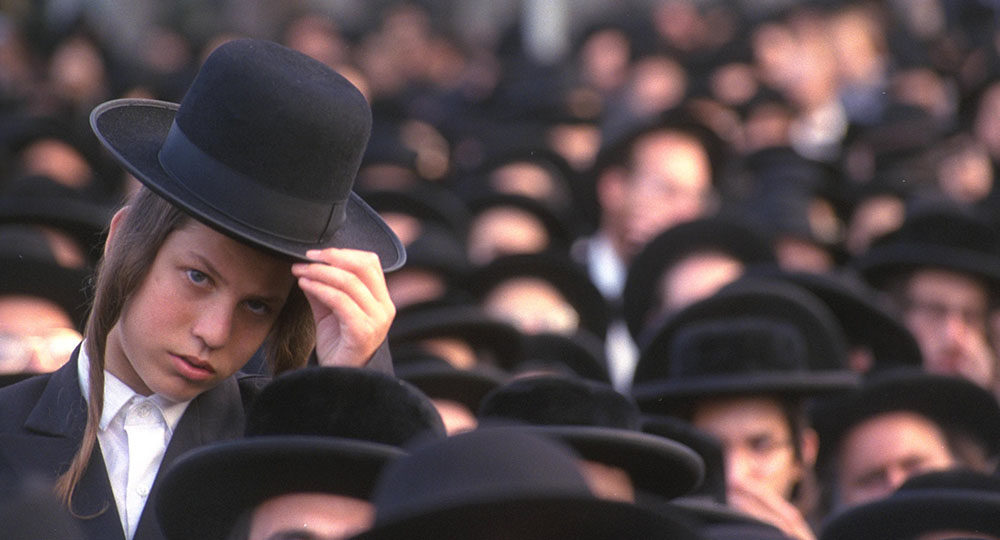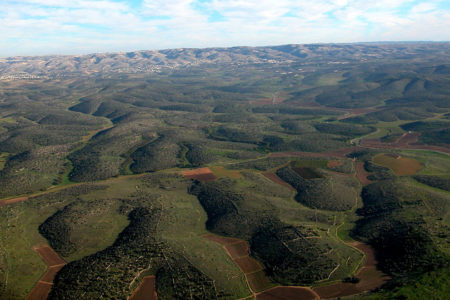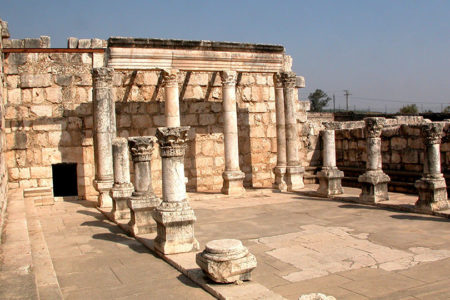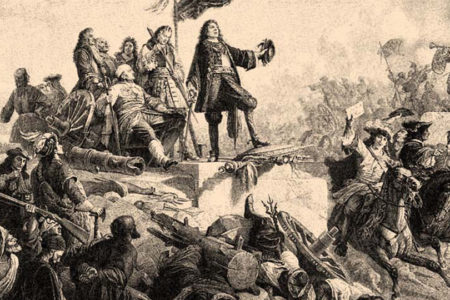The World of the Hasidim Conclusion
Without question, Rabbi Israel Ben Eliezer (also known as the Besht and the Ba’al Shem Tov) left a permanent mark on Judaism. The Hasidic (ultra-Orthodox) movement flourished under his care. But all Hasidic teaching is not alike. And not all Jewish people agree with Hasidism.
Although Hasidism possesses many local leaders, each sect has one major leader who is revered, almost worshiped, by his followers. He is the head of his dynasty, and his scepter usually falls to his heir or someone in his family.
The Besht created the climate for this situation with his doctrine on the position of the tsaddik (“righteous one”). Tsaddiks are individuals believed to possess superior spiritual qualities. Unlike the biblical person of the Messiah, a tsaddik is not regarded as one who will bring world peace. Rather, he is a spiritual facilitator to help people function joyously in their world.
Besides tsaddik, a Hasidic leader may be called reb (a Yiddish term of respect), rebbe, or rav. Hasidim regard the rebbe above all other positions. He is analogous to a Hindu guru because he guides his followers in all aspects of life. He leads his people to do devekut, adherence to God. The tsaddik, or rebbe, is responsible to lead his followers to salvation of their souls through communion with God.
The Ba’al Shem Tov left no written form of his teaching, but his followers wrote many stories about him; and when he died in 1770, the popular leader become legendary. His ideas spread to hundreds of communities throughout Poland, Lithuania, and Ukraine. Rebbes arose in dozens of Eastern European towns; and many Jewish people followed them, believing they possessed the knowledge of the way to God. Towns with names like Satmar, Belz, Kotzk, and Lubavitch produced the individual sects of Hasidism we see today. Wrote expert Chaim Shneider:
Slowly but steadily, Hasidism came to be accepted as a legitimate way of observing Judaism. Hasidim were known for their devout practices, such as frequenting the Mikva [ritual bath]. They sometimes didn’t follow Halacha [established Jewish law], such as Davening (praying) late in the day. Hasidism branched out into literally hundreds of Rabbinic dynasties.1
Before World War II, Poland had 3.5 million Jews. And the “vast majority” of them, wrote Shneider, were Hasidic.2
Belz’e. Named for a town in Galicia (now southeast Poland) and founded in the 19th century by Rav Dov, its main distinctive is that married men remain in synagogue all day to study the Talmud and pray. They live by the charitable support of local businessmen and merchants. Like a dynasty, the position of tsaddik is handed down through the family.
Satmar. The most traditional type of Hasidism, Satmar originated from a remote Hungarian town in Transylvania. Satmars hold the distinction of being one of the few Jewish groups that do not support the current establishment of the State of Israel, believing it should not exist until the Messiah Himself establishes it. They contend that Zionism and the creation of the Jewish state brought the Holocaust as judgment to the Jewish people. Thus, wrote Shneider, in 1948 the Satmar leader “would sob tremendously…about the harm that the Jewish state causes and about how sinful it is for Jews to establish their own power prior to the arrival of ‘Mashiach’ to redeem them.”3 He also lamented the Israeli victory in the 1967 Six-Day War, and “at one point he ordered that no one who believes in the Zionist cause should ever step through the Shul’s [synagogue’s] door again.”4 Satmars do not recruit members from the unobservant Jewish community.
Lubavitch. One of the most visible Hasidic movements is the Lubavitcher, also called Chabad, an acronym for “Hokhmah, Binah, Da’at—wisdom, understanding, and knowledge.”5 The Lubavitch desire nonpracticing Jews to return to the fold of observant Jewry. They drive “mitzvah [good-deed] mobiles,” which are milk truck-sized vehicles converted into worship areas, into Jewish communities to look for hatless, Jewish men and invite them to don phylacteries and pray. Their last rebbe was the well-known Menachem Mendel Schneerson of Brooklyn, New York. Many of his followers believe he is the messiah, even though he died in 1994.
Hasidism’s Detractors
Along with his large following, the Ba’al Shem Tov also attracted a number of critics. They considered placing joy and contentment ahead of Torah study to be a dangerous sign of Judaism’s fall. Yet the shocking truth was that, once the Besht died, his teachings spread even faster than when he was alive. The critics felt the movement needed to be stopped. Twelve years after his death,6 a group arose called the Mitnagdim, which means “opponents.”7
The opposition movement actually began with the emergence of a rabbi named Elijah Solomon Zalman (1720–1797). He lived in Vilna, a city called “Jerusalem of Lithuania,”8 which was filled with synagogues and academies and was located north of the area of Poland where Hasidism was the most prominent. Though brilliant (Solomon delivered a complicated talmudic discourse at age seven), he refused any title or public position. Unlike the Besht, he studied the Talmud 18 hours a day. He also studied secular subjects, such as geometry, astronomy, and medicine. “It may be said of him that no Jewish or general topic which had a bearing on Judaism was alien to him.”9
He studied all the time. He slept only two hours a day, never more than half an hour at a time. He eliminated distractions by closing the shutters even in daytime and studied by candle-light. Eventually he arose to become the greatest spiritual and intellectual leader of Jewry in modern times. The Vilna Gaon, as he came to be known, was concerned that Hasidism would spread to such an extent that the Torah and Talmud would be replaced entirely with emotional prayer, experience, and Kabbalah.(See “The Vilna Gaon: A Mystical Genius” in the January/February issue of Israel My Glory.)
Viewing the position of tsaddik as idolatry, he believed it promoted the worship of human beings. In 1772, just two years after the Besht’s death, the Gaon decreed that Hasidim should be excommunicated. He went so far as to state,
I will continue to stand on guard, and it is the duty of every believing Jew to repudiate and pursue them [the Hasidim] with all manner of afflictions and subdue them, because they have sin in their hearts and are like a sore on the body of Israel.10
Over the years the Mitnagdim became less antagonistic toward Hasidism because a more bitter opponent arose, one that threatened both groups. The enemy was a group of men who wanted all people, especially the Jews of Poland and Russia, to embrace the culture of Europe. This movement was called Haskalah, or enlightenment. The demands of Haskalah meant assimilation—an end unacceptable to any observant Jew. Alexander II, czar of Russia, ruled with an “iron fist within the velvet glove.”11 He tried to open large cities to wealthy Jews, wanting them to invest their skill and money to increase trade. But the majority of Jews would not have benefited from these decrees and were wary of his “kindness.” As a result of their distrust, seen as unwillingness to cooperate, pogroms began just six weeks after Alexander III came to the throne.12
It was these pogroms—government-sanctioned massacres of Jewish people—that led to mass immigration to America and the survival of the Hasidic movement.
While there are many differences within the Hasidic movement regarding such things as leadership, Israel, and the identity of the Messiah, there is major agreement that, for Jews, worldliness and assimilation in a Gentile world are dangerous. The current trend of Hollywood elites to blend yoga and New Age “karma” with a study of Kabbalah illustrates their concern.
Hasidic Jews are not interested in the latest fad; they want to preserve their distinctiveness with a desire to please God. It should encourage believers that there are people, especially Jewish people, who have this desire. Yet it is heartbreaking to realize that they misdirect their efforts. Living a life for God does not have to involve special leaders, clothing, dress, or food. A truly pious (hasidic) life is possible only when the heart has been “koshered” (made suitable) by faith in the biblical, true, and living Messiah.
ENDNOTES
- Chaim Shneider, “The Roots of Hasidism” <www.nycchitecture.com/WBG/wbg-jewish.htm>.
- Ibid.
- Chaim Shneider, “The Roots of Satmar,” November 5, 2001 <http://hasidicnews.com/Satmar.shtml>.
- Ibid.
- “Hasidism,” <http://religiousmovements.lib.virginia.edu/nrms/hasid.html>.
- Yehuda Klausner, “The Hasidic Rabbinate, Part 1,” Rav-Sig: Online Journal <www.jewishgen.org/Rabbinic/journal/hasidic1.htm>.
- Encyclopaedia Judaica, CD-ROM edition, s.v. “Mitnaggedim.”
- Deborah Pessin, The Jewish People (New York: United Synagogue Commission on Jewish Education, 1953), 3:107.
- Samuel Kalman Mirsky, “Elijah Ben Solomon Zalman,” Encyclopaedia Judaica, CD-ROM edition.
- Israel Klausner, “Elijah Ben Solomon Zalman,” Encyclopaedia Judaica, CD-ROM edition.
- Pessin, 3:161.
- Ibid., 3:167.







